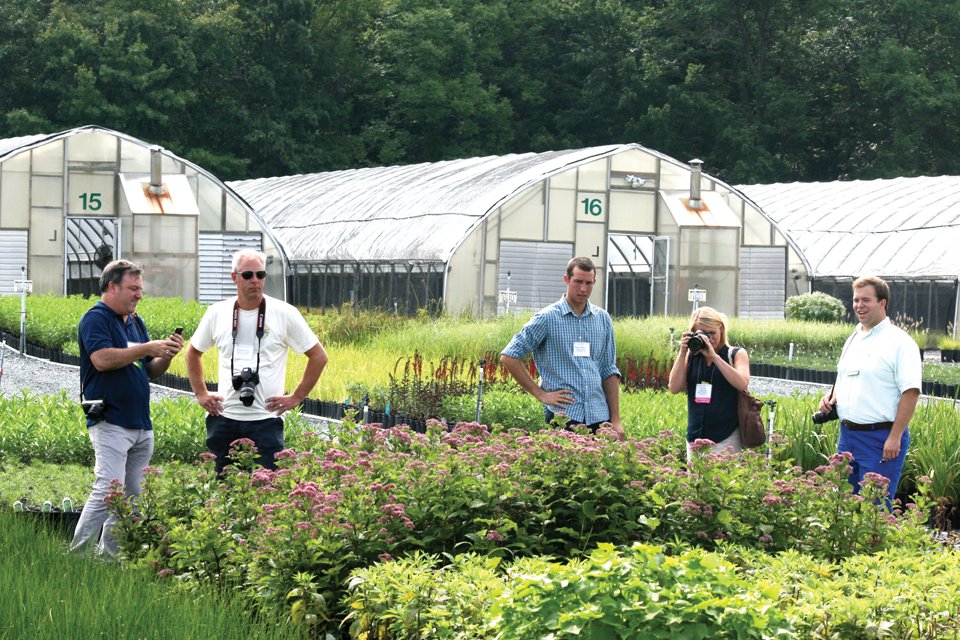Ian Baldwin: Lessons You Can Learn From Visiting Other Greenhouse Operations

Note: The following is the latest blog posting by garden retail industry consultant Ian Baldwin. It was originally posted on Sept. 2, 2018.
If you are in garden retail, summer is the time to take a break after the spring zing and maybe join one of the many garden center tours and meetings offered in various states. It’s a great opportunity to spend time with like minds, and share stories and ideas with one’s peers across the country.
Having seen plenty of garden centers myself this summer from Seattle to Boston, I wanted to share some of my stories from more than 30 years of doing just that.
If you’ve heard me speak recently, you already know we are seeing a serious polarization in the independent or local garden retail channel. It’s similar to what happened in the local hardware channel in the 1990s, when around 50,000 retailers shrunk to around 18,000 now. But those survivors are now thrivers.
The Good are Getting Better
It’s very clear from the last few years that in the family owned, privately held garden retail channel, the good are getting better. They are winning market share (often in the same town) from the less good, and this year’s data from our two network groups and clients validates that observation. The better-managed companies are making more margin dollars, even if the sales topline looks similar.
So as you tour these stores, look beyond the photo-shoot displays and clean bathrooms. Ask the questions that really matter: Where did they get their inspiration and ideas? How did they know it would pay off? Who do they seek counsel from and make critical decisions?
Early Adopters
I am guessing you’ll find that your hosts were early adopters and networkers. Although the American Nursery and Landscape Association’s Management Clinic sadly ended six years ago now, I’ll bet your hosts were regulars there, networking and learning from 7:00 a.m. until 1:00 a.m. I suspect they were early adopters of capital improvements such as state-of-the-art greenhouses, benching, and signage. They were probably early adopters of network groups, training programs, and, dare I say, they might even be among the 730 people who went on one of our 16 England garden center tours.
I have spent many hours wondering what makes a winner in this channel. It starts with a clear vision based on months or years of collecting the data/evidence of others’ successes and failures. It continues with a clear feasibility plan that is pre-loaded with strategies for expected (and unexpected) challenges. It requires a strong Plan B, an ability to measure and monitor, and an openness and a preparation for change mid-dream if necessary. It also means being able to make some unpopular personnel and/or family decisions (try firing your sister or putting your mom on a 90 day write up…).
Leverage and Risk
These winners invest more than most others are comfortable spending. They accept risk that stops others sleeping at night, and they hire people who know more than they do. Two of our clients borrowed loans equal to their annual sales in the previous year (those were the days when banks were partners), while in their 20s. Another bought out their parents, but only if they agreed to move 100 miles away — think about that one.
I know owners who invested early in point-of-sale (POS) systems, while others shunned it because of their own dislike of computers. We have a client who, 12 years ago, spent more than $16,000 on a sign machine, while other more-established and larger nurseries scribbled on the back of an old sign. We have clients who travel thousands of miles to see stores not in the garden business, just to keep up with general retail. They all have a passion to learn and keep moving forward, to constantly challenge and change it up. They simply don’t say (or tolerate their team saying), “That’s good enough.”
After so many years in the trenches, I could go on. But the key takeaway from working with some of the best in the business is that there are clear, consistent reasons for their success: vision, focus, risk, and the humility to constantly learn and change.
The lesson? You can’t take a picture of that. If you’re heading out on a tour, we encourage you to ask the same questions that your hosts asked. Because another probability of these winners is that they will openly share their successes and failures with you (well, as long as you are located more than a few miles away).









